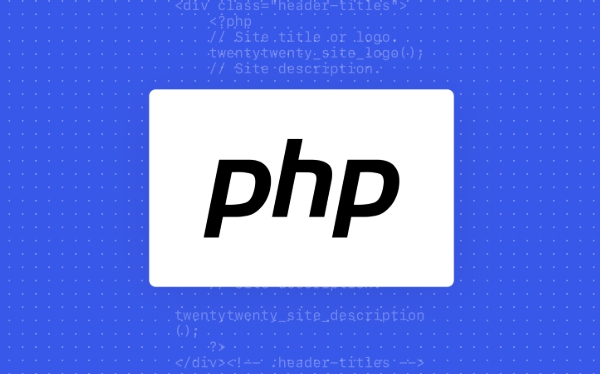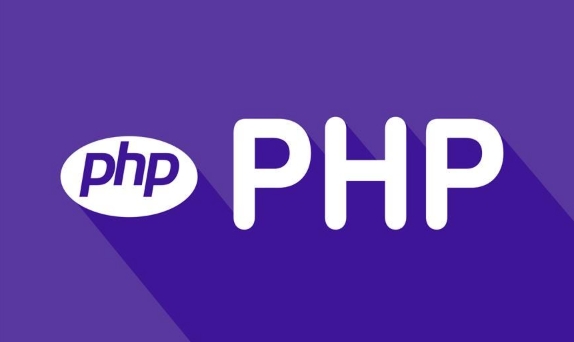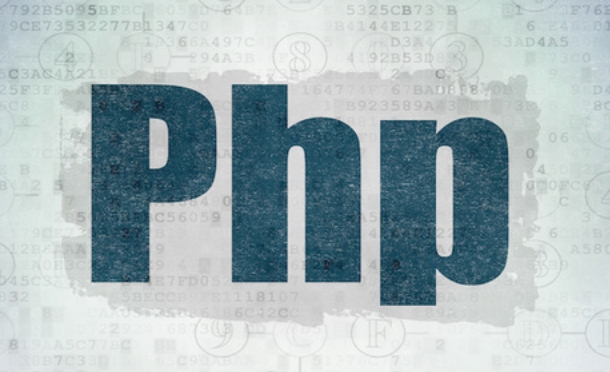There are three main ways to build a PHP development environment on your Mac: use Homebrew to install PHP, configure Apache or Nginx to run PHP, or use integrated tools such as MAMP and Laragon. First, use Homebrew to execute brew install php or the specified version to install it. If it is a non-main version, you need to manually link it; secondly, you can enable the system's own Apache and modify the configuration file to support PHP modules, or configure Nginx to handle requests in combination with php-fpm, pay attention to checking permissions and path issues; finally, MAMP and Laragon provide a one-click integrated environment for graphical interfaces, suitable for beginners, eliminating the steps of manually configuring dependencies. You can complete the construction by choosing the right method according to your technical capabilities and needs.

It is actually not difficult to build a PHP development environment on your Mac. You can choose from a variety of ways to complete it, such as using Homebrew to build it, or directly using integrated environment tools. Here are some practical methods and precautions.

Install PHP with Homebrew is the most convenient
Homebrew is the most commonly used package management tool on Mac, and installing PHP is very easy. First make sure you have installed Homebrew. If not, you can check the installation commands on the official website.

The steps to install PHP are as follows:
- Run
brew install phpto install the latest version of PHP - If you need a specific version (such as PHP 8.1), you can use
brew install php@8.1 - After the installation is completed, execute
php -vto see if the installation is successful
It should be noted that different versions of PHP may not automatically link to the system path. If the installation is a non-main version (such as php@8.1), you need to manually execute brew link --force --overwrite php@8.1 .

Configure Apache or Nginx to run PHP
By default, macOS comes with Apache, but PHP support is not enabled. You can configure it in the following ways:
- Start Apache:
sudo apachectl start - Modify the Apache configuration file
/etc/apache2/httpd.conf, remove the comments beforeLoadModule php_module, or add module loading statements - Restart Apache:
sudo apachectl restart
If you are using Nginx, you need to configure php-fpm . This service will usually be brought with you after PHP is installed. The way to start it is:
-
sudo brew services start php - Then configure Nginx to forward the request to the socket or port of
php-fpm
The error-prone parts of this step are permission issues and path errors. It is recommended to check the log file /var/log/apache2/error_log or Nginx log.
Using MAMP or Laragon is easier
If you don't want to mess with the command line, MAMP is a graphical tool that integrates Apache, MySQL and PHP, and starts with one click. Suitable for new friends.
Laragon is another lightweight tool. Although native to Windows, it also has an experimental version of macOS. Its advantages are fast speed, flexible configuration, and support for multi-project management.
The advantage of these tools is that they do not need to manually configure the dependencies between various services, and upgrades are also more convenient.
Basically these methods. You can choose the right method according to your technical level and needs. Using Homebrew is more free but also more "technical", and using tools like MAMP is faster. What is not complicated but easy to ignore is the path setting and service startup sequence. Be careful not to miss these details.
The above is the detailed content of How to build PHP environment on Mac?. For more information, please follow other related articles on the PHP Chinese website!

Hot AI Tools

Undress AI Tool
Undress images for free

Undresser.AI Undress
AI-powered app for creating realistic nude photos

AI Clothes Remover
Online AI tool for removing clothes from photos.

Clothoff.io
AI clothes remover

Video Face Swap
Swap faces in any video effortlessly with our completely free AI face swap tool!

Hot Article

Hot Tools

Notepad++7.3.1
Easy-to-use and free code editor

SublimeText3 Chinese version
Chinese version, very easy to use

Zend Studio 13.0.1
Powerful PHP integrated development environment

Dreamweaver CS6
Visual web development tools

SublimeText3 Mac version
God-level code editing software (SublimeText3)
 PHP Variable Scope Explained
Jul 17, 2025 am 04:16 AM
PHP Variable Scope Explained
Jul 17, 2025 am 04:16 AM
Common problems and solutions for PHP variable scope include: 1. The global variable cannot be accessed within the function, and it needs to be passed in using the global keyword or parameter; 2. The static variable is declared with static, and it is only initialized once and the value is maintained between multiple calls; 3. Hyperglobal variables such as $_GET and $_POST can be used directly in any scope, but you need to pay attention to safe filtering; 4. Anonymous functions need to introduce parent scope variables through the use keyword, and when modifying external variables, you need to pass a reference. Mastering these rules can help avoid errors and improve code stability.
 How to handle File Uploads securely in PHP?
Jul 08, 2025 am 02:37 AM
How to handle File Uploads securely in PHP?
Jul 08, 2025 am 02:37 AM
To safely handle PHP file uploads, you need to verify the source and type, control the file name and path, set server restrictions, and process media files twice. 1. Verify the upload source to prevent CSRF through token and detect the real MIME type through finfo_file using whitelist control; 2. Rename the file to a random string and determine the extension to store it in a non-Web directory according to the detection type; 3. PHP configuration limits the upload size and temporary directory Nginx/Apache prohibits access to the upload directory; 4. The GD library resaves the pictures to clear potential malicious data.
 Commenting Out Code in PHP
Jul 18, 2025 am 04:57 AM
Commenting Out Code in PHP
Jul 18, 2025 am 04:57 AM
There are three common methods for PHP comment code: 1. Use // or # to block one line of code, and it is recommended to use //; 2. Use /.../ to wrap code blocks with multiple lines, which cannot be nested but can be crossed; 3. Combination skills comments such as using /if(){}/ to control logic blocks, or to improve efficiency with editor shortcut keys, you should pay attention to closing symbols and avoid nesting when using them.
 Tips for Writing PHP Comments
Jul 18, 2025 am 04:51 AM
Tips for Writing PHP Comments
Jul 18, 2025 am 04:51 AM
The key to writing PHP comments is to clarify the purpose and specifications. Comments should explain "why" rather than "what was done", avoiding redundancy or too simplicity. 1. Use a unified format, such as docblock (/*/) for class and method descriptions to improve readability and tool compatibility; 2. Emphasize the reasons behind the logic, such as why JS jumps need to be output manually; 3. Add an overview description before complex code, describe the process in steps, and help understand the overall idea; 4. Use TODO and FIXME rationally to mark to-do items and problems to facilitate subsequent tracking and collaboration. Good annotations can reduce communication costs and improve code maintenance efficiency.
 How Do Generators Work in PHP?
Jul 11, 2025 am 03:12 AM
How Do Generators Work in PHP?
Jul 11, 2025 am 03:12 AM
AgeneratorinPHPisamemory-efficientwaytoiterateoverlargedatasetsbyyieldingvaluesoneatatimeinsteadofreturningthemallatonce.1.Generatorsusetheyieldkeywordtoproducevaluesondemand,reducingmemoryusage.2.Theyareusefulforhandlingbigloops,readinglargefiles,or
 Learning PHP: A Beginner's Guide
Jul 18, 2025 am 04:54 AM
Learning PHP: A Beginner's Guide
Jul 18, 2025 am 04:54 AM
TolearnPHPeffectively,startbysettingupalocalserverenvironmentusingtoolslikeXAMPPandacodeeditorlikeVSCode.1)InstallXAMPPforApache,MySQL,andPHP.2)Useacodeeditorforsyntaxsupport.3)TestyoursetupwithasimplePHPfile.Next,learnPHPbasicsincludingvariables,ech
 How to access a character in a string by index in PHP
Jul 12, 2025 am 03:15 AM
How to access a character in a string by index in PHP
Jul 12, 2025 am 03:15 AM
In PHP, you can use square brackets or curly braces to obtain string specific index characters, but square brackets are recommended; the index starts from 0, and the access outside the range returns a null value and cannot be assigned a value; mb_substr is required to handle multi-byte characters. For example: $str="hello";echo$str[0]; output h; and Chinese characters such as mb_substr($str,1,1) need to obtain the correct result; in actual applications, the length of the string should be checked before looping, dynamic strings need to be verified for validity, and multilingual projects recommend using multi-byte security functions uniformly.
 Quick PHP Installation Tutorial
Jul 18, 2025 am 04:52 AM
Quick PHP Installation Tutorial
Jul 18, 2025 am 04:52 AM
ToinstallPHPquickly,useXAMPPonWindowsorHomebrewonmacOS.1.OnWindows,downloadandinstallXAMPP,selectcomponents,startApache,andplacefilesinhtdocs.2.Alternatively,manuallyinstallPHPfromphp.netandsetupaserverlikeApache.3.OnmacOS,installHomebrew,thenrun'bre






